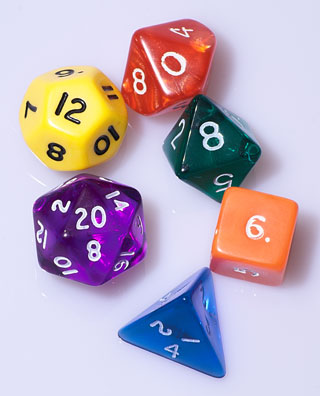Roll the Dice with Confidence: Use Our Free Online Dice Roller Tool
Need to roll a die but don’t have one handy? Whether you’re playing a tabletop game, teaching probability, or making quick random decisions, the Dice Roller Calculator at BestCalculator.io is your go-to virtual tool. It simulates the roll of standard and specialty dice, offering instant, fair results — no physical dice needed.
This free online dice roller allows you to select how many dice you want to roll and which type — from classic 6-sided cubes to 20-sided shapes used in popular games like Dungeons & Dragons. Simply click “Roll” and get unbiased results in a flash, all from your desktop or mobile device.
Dice Roller
Virtual Dice Roller
Example (2D6):
Rolls: 3, 5
Custom Dice Roller
Sum = Die1 + Die2 + ... + DieN
Product = Die1 × Die2 × ... × DieN
Example (3D8):
Rolls: 2, 7, 5
Sum: 14
Product: 70
What Is a Dice?
A dice (or die, singular) is a small object with multiple faces—most commonly six—that displays a number or symbol when thrown. It’s widely used to produce random results in tabletop games and gambling. Classic examples include games like Yahtzee, Boggle, and Backgammon, while strategic games like Monopoly, Risk, Settlers of Catan, and Dungeons & Dragons also rely heavily on dice. Beyond these, dice play a central role in countless other games around the world.
Popular Dice Shapes
Dice come in various shapes, each defined by the number of sides they have. The most commonly used dice include:
Tetrahedron (4-sided) – typically blue
Cube (6-sided) – the standard die, usually orange
Octahedron (8-sided) – often green
Pentagonal Trapezohedron (10-sided) – non-cubic, sometimes orange
Dodecahedron (12-sided) – generally yellow
Icosahedron (20-sided) – often purple

Beyond these, there are many other shapes—some with symbols instead of numbers, or ones that don’t follow a traditional number sequence. Some novelty dice are even spherical.
Why Use a Virtual Dice Roller?
While physical dice are fun and tactile, they’re not always available, especially in digital or remote settings. That’s where our online Dice Roller Calculator shines. It’s:
Instantly accessible from any device
Customizable for different dice types and quantities
Reliable, offering results based on randomized logic
Clutter-free, with a clean and user-friendly interface
Whether you’re a student learning about probability, a teacher conducting experiments, a game master running an RPG, or a business owner needing a quick random number for a contest — this tool is for you.
Are Physical Dice Really Random?
Ideally, a die should give each face an equal chance of appearing. However, most mass-produced dice are not perfectly balanced. Tiny imperfections in shape or weight can subtly skew results.
Quick Test for Dice Balance:
Want to check if your physical die is fair? Try this at home:
Place the die in water.
Add salt until it floats.
Flick the die gently and record which face comes up.
Repeat multiple times.
A fair die should yield varied results. If you see the same number often, your die may be biased. Though not a scientific test, it’s useful for spotting obvious imbalances.
Are Digital Dice More Accurate?
Unlike physical dice, online dice rollers use pseudo-random number generators (PRNGs). These are algorithms that mimic randomness. While not “truly random” at a quantum level, PRNGs provide consistent, unbiased outcomes — often more reliable than worn or imperfect physical dice.
So, if fairness and repeatability matter — especially in educational or professional settings — virtual dice are a smart alternative.
What Studies Reveal About Dice Fairness
Independent tests on dice from different manufacturers—especially on d20s used in role-playing games—have shown significant variation. Even dice made by the same company under identical conditions can differ in balance. While some brands produce more consistent results, none were found to be perfectly random.
Real-World Use Cases
Here are two everyday scenarios where this tool comes in handy:
1. Learning Probability in School
A middle school math teacher uses the Dice Roller to simulate 100 rolls of two six-sided dice. Students analyze the frequency of sums like 7 or 11, helping them grasp probability distributions in a hands-on, visual way.
2. Virtual Game Night
During an online D&D campaign, a player forgets their d20. Instead of halting the game, they open BestCalculator.io’s Dice Roller, set the die type to 20-sided, and roll with confidence — keeping the game fun and fair for all.
Related Calculators You May Find Useful
Looking for more randomness or number-based tools? Try:
Random Number Generator – Set a range and generate unbiased results instantly.
Probability Calculator – Calculate chances and odds based on real formulas.
These tools are designed to complement your gameplay, classroom experiments, or business activities — all while being fast, reliable, and easy to use.
Conclusion
Whether you’re playing a casual board game or leading a role-playing campaign, understanding how dice work can enhance your gameplay. Try our free dice roller above for a fast, fair, and fun way to generate random numbers—no physical dice required!
